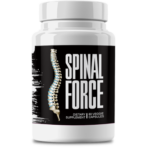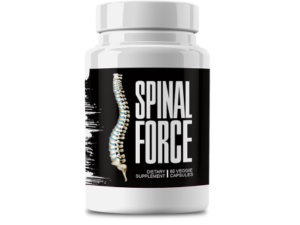This Village-Made Chinese Pain Reliever Eliminates Back And Joint Pain!
Understanding the Efficacy of Hyaluronic Acid for Knee Pain: A Patient’s Guide

Understanding How Hyaluronic Acid Can Help with Knee Pain: A Patient’s Roadmap
A Fresh Look at Hyaluronic Acid for Knee Pain
If you’ve been battling nagging knee pain and are curious about trying something new, you’ve probably come across the term “hyaluronic acid for knee pain.” Think of this guide as your friendly companion that unpacks what hyaluronic acid really is, how it gets to work, and why many folks are now considering it as a go-to option. With so many non-surgical treatments on the market, having a clear idea of alternatives like this can really put you in the driver’s seat when it comes to your joint health. We’re here to mix expert info with some real-life stories, giving you a well-rounded view of this treatment option.
Hyaluronic acid has its fair share of both fans and skeptics, and rightfully so. But its steady rise in popularity among people who haven’t found relief with more traditional methods is something you can’t ignore. In this opening section, we’ll break down the basics, share why more patients are exploring this treatment, and give you a quick rundown of what to expect from the process. Newbies and those wanting a deeper dive alike will find this guide a handy resource.
So, What Exactly Is Hyaluronic Acid for Knee Pain?
Simply put, hyaluronic acid is a natural substance found in your body—mainly in your joint fluid and connective tissues. It acts like a built-in lubricant and cushion, making movement smoother and helping to stave off pain. For knee pain, doctors inject either a synthetic or naturally derived version of this substance into the joint, helping to replenish the dwindling synovial fluid that could be contributing to your discomfort. In a nutshell, this treatment aims to restore that natural lubrication, reducing pain and boosting mobility.
Why More and More Patients Are Turning to It
Over time, an increasing number of patients have dipped their toes into hyaluronic acid treatments as a less invasive alternative to surgery. Folks love the fact that it doesn’t come with the heavy risks typically associated with surgery, and personal success stories gush on social media and support groups. Even though some people and professionals have raised eyebrows, the number of individuals experiencing significant pain relief after a series of injections continues to grow.
A Quick Look at the Treatment Process
The journey usually starts with an evaluation by a specialist who takes a good hard look at your knee’s condition. If everything checks out, you’d then move on to a series of injections—typically administered over a few weeks. The idea is to gradually rebuild your joint’s natural lubrication, easing the discomfort that comes from lost synovial fluid. Though the procedure is quite straightforward, each session helps the hyaluronic acid settle in and work its magic, offering cushioning and improved mobility. Keep in mind that post-treatment care may vary slightly from one provider to the next, but the main goal is always to ease pain and strengthen joint function.
Unpacking How Hyaluronic Acid Works Its Magic on Knee Pain
The way hyaluronic acid tackles knee pain is pretty multi-layered—it doesn’t just mask symptoms, but targets several key areas of joint health all at once. At its core, it replenishes the natural lubrication in your knee, cuts down on inflammation, and even lends a hand in protecting your cartilage. Many patients notice that, beyond just managing pain, this treatment also helps keep their joints functioning more smoothly overall. In this section, we’re diving into the nitty-gritty of how these injections work, making sure you have a clear picture of both the benefits and a few limitations.
Getting to grips with the mechanism behind the injections is crucial if you want to assess whether this treatment might work for you. By reintroducing a substance your body naturally produces, you’re not just covering up pain—you’re addressing a root cause. With a primary focus on boosting lubrication, easing inflammation, and safeguarding cartilage, hyaluronic acid injections offer a modern twist to knee pain management. Let’s take a closer look at these elements and discover how they pave the way for the relief so many patients are raving about.
The Scoop on Joint Lubrication
Imagine your joints as well-oiled machines. That’s where hyaluronic acid comes into play—it’s the magic fluid keeping everything running smoothly. In a healthy knee, this fluid not only cushions shocks but also dramatically reduces friction between cartilage surfaces. As we age or accumulate wear and tear, our natural levels of this fluid drop, which means more friction, stiffness, and pain. Injecting hyaluronic acid helps to replenish this crucial lubricant, turning a creaky, resistant joint into one that moves with ease and comfort.
Chilling Out Inflammation and Dampening the Pain
One of the cool benefits of these injections is their ability to dial down inflammation. In many chronic knee issues like osteoarthritis, inflammation is the culprit behind ongoing pain and swelling. By calming the inflammatory response, hyaluronic acid makes your knee environment less prone to painful flare-ups. Patients often share that they notice a reduction in swelling and discomfort after starting their treatment—a double whammy that promotes not just short-term relief, but potentially longer-lasting improvements in knee health.
Giving Your Cartilage a Boost
Your knee’s cartilage, the unsung hero that cushions joint movement, can wear down over time—especially following injuries or prolonged stress. Hyaluronic acid injections help cushion the joint, thereby minimizing friction that would otherwise speed up cartilage wear. Although they aren’t a miracle cure, many clinicians believe these injections support cartilage health, contributing to better joint stability and function in the long run. Essentially, they act like a soothing balm for joints that have seen better days.
The Clinical Lowdown on Hyaluronic Acid’s Benefits
When it comes to the science behind hyaluronic acid, there’s a wealth of studies out there—most of which are pretty encouraging. Research has shown that many patients get notable relief and gain better mobility when compared with simpler treatments like oral meds. Here, we’ll summarize some key studies, toss in a few patient success stories, and even touch on some of the debates within the medical community. This way, you’ll have a well-rounded picture of where the treatment stands.
Sure, the research can sometimes seem a bit all over the place, but many physical therapists and orthopedic experts back hyaluronic acid injections as a valuable tool in the fight against knee osteoarthritis. The documented benefits range from pain reduction to improved joint function. Although the results can sometimes be modest or short-lived, especially for some patients, overall—when administered at the right time—the injections tend to offer comfort and better function.
Key Study Highlights
Diverse studies have explored the impact of hyaluronic acid specifically for osteoarthritis-related knee pain. For many of these studies, early administration of the injections translates to better results in pain relief and physical function. Research featured in respected orthopedic journals often compares these injections against placebos or even corticosteroid injections, and many times, the data tilts in favor of hyaluronic acid. Although every study has its quirks, the general consensus is that for a good number of patients, these injections can offer a real improvement in daily life.
Real Stories from Real People
It isn’t all about lab studies—there are plenty of personal success stories that back up the effectiveness of hyaluronic acid for knee pain. Countless individuals have shared how their pain has eased up, allowing them to dive back into daily activities with less worry. From seniors wanting to stay active to middle-aged adults facing early osteoarthritis symptoms, these stories provide relatable, firsthand insights into the potential benefits of this treatment.
Tackling the Controversies
Of course, no treatment is without its detractors and debates. Not everyone gets significant relief, and responses to the treatment can vary wildly from one person to the next. Some critics argue that the improvements seen with hyaluronic acid injections are either temporary or only moderately effective. Plus, there’s ongoing debate about which patients are the ideal candidates for this therapy. Keeping these controversies in mind is a good way to set realistic expectations and to spark a more informed chat with your healthcare provider about whether this option suits your needs.
How Does Hyaluronic Acid Stack Up Against Other Knee Pain Treatments?
Picking the right treatment for knee pain can feel like navigating a maze, especially when you’ve got everything from pills and physical therapy to full-blown surgery on offer. Hyaluronic acid injections carve out a unique space here, offering a sweet spot between real relief and minimal side effects. In this part, we’ll compare them with other popular options like corticosteroid injections and physical therapy, and also look at how they perform in the long run, so you get a clearer picture of where they might fit into your treatment plan.
Many patients lean towards hyaluronic acid because it often provides longer-term relief without the harsher side effects sometimes linked to corticosteroids. And while physical therapy is brilliant for building strength and stability, it may not always offer the quick relief some people crave. Comparing these treatments can help you weigh the pros and cons, giving you a balanced view that you can discuss further with your clinician.
How They Differ from Corticosteroid Injections
Both hyaluronic acid and corticosteroid injections are common picks for knee pain, but they work in very different ways. Corticosteroids are powerhouse anti-inflammatories that can bring rapid relief from pain and swelling—but their effects might not stick around, and overuse could weaken the joint. In contrast, hyaluronic acid injections are all about restoring your knee’s natural fluid, working more gradually but often with longer-lasting benefits. It’s a matter of choosing between short-term deep relief and a steadier, more nourishing approach.
The Added Perks Over Physical Therapy Alone
We all know physical therapy is a cornerstone of managing knee pain, especially when dealing with chronic issues like osteoarthritis. However, while targeted exercises and movement are great for muscle building and joint stability, they sometimes don’t cut it for immediate pain relief. That’s where hyaluronic acid can play a game-changing role—helping to reduce pain and inflammation just enough so that you can really get the most out of your physical therapy sessions. Often, combining both approaches yields better overall outcomes than relying solely on exercises.
Looking at Long-Term Relief
When you’re dealing with chronic knee pain, long-term relief is the name of the game. Many patients see significant improvements with hyaluronic acid injections, though how long the benefits last can differ from person to person. Some enjoy extended periods of comfort and mobility, while others might need booster treatments down the line. Studies suggest that especially in osteoarthritis cases, the relief can last several months. But it’s important to keep in mind that these injections are typically part of a broader strategy aimed at managing symptoms rather than delivering a permanent fix. Having a frank discussion about your long-term goals with your healthcare provider can ensure your treatment plan is just right for you.
Who Stands to Gain the Most from Hyaluronic Acid Treatments?
Finding out if this treatment is right for you involves taking a good look at your specific situation and the source of your knee pain. Generally speaking, individuals dealing with early to moderate osteoarthritis or joint issues from wear-and-tear are likely to see the most benefit. This section lays out who might be the best candidates, how to properly assess your knee condition, and when other treatments might make more sense. If you’re in the zone of early joint discomfort or just weighing your options, this info should come in pretty handy.
The sweet spot for hyaluronic acid treatment is typically among those who haven’t had major joint degeneration or complete cartilage loss. When the problem is mainly about lost lubrication rather than severe structural damage, the benefits can be really noticeable. That said, every knee is unique, so getting a thorough diagnosis is key before diving in. And if your joint has seen better days—say, advanced degeneration—more aggressive treatments might be warranted. The goal here is to match what you hope for with what’s realistically achievable, and always tailor the approach to your specific needs.
Profiles for Ideal Patients
The ideal candidates for hyaluronic acid injections are often people with early-stage osteoarthritis or those suffering from joint pain due to everyday wear rather than a big injury. These individuals typically report stiffness and discomfort that hold them back from their usual activities, even though imaging tests show that their knees aren’t terribly damaged yet. Plus, if you’ve seen only partial relief from more conservative treatments, this therapy might just offer that extra boost you need to stay active and comfortable.
How to Evaluate Your Knee Joint
Before jumping into hyaluronic acid treatments, it’s crucial to get a detailed look at your knee’s condition. This usually involves imaging tests like X-rays or MRIs, along with a thorough physical exam. These assessments help your doctor decide if your knee can benefit from replenishing synovial fluid. Factors like cartilage thickness, narrowing of the joint space, and overall alignment all come into play. Working closely with your orthopedist or physical therapist will ensure you’re headed down the right road, with treatment tailored to your joint’s specific needs.
When Other Treatments Might Be a Better Fit
Not every knee pain situation calls for hyaluronic acid. For example, if your knee shows advanced degeneration or has suffered major trauma, you might be better off exploring surgical options or more intensive physical therapy routines. Also, if you’ve already given conservative measures a solid try without success, it might be time to look at alternatives. Getting to the root cause of your knee pain through proper diagnostic tests will help guide you to the treatment that makes the most sense for your situation.
Navigating the Procedure: What to Expect with Hyaluronic Acid Injections
If you’re considering this treatment, it helps to know what’s coming your way—before, during, and after the injections. Whether you’re gearing up for your very first session or just curious about the process, this section offers a clear, down-to-earth overview. We cover everything from pre-treatment prep, the ins and outs of the injection day, to the post-treatment care that maximizes your recovery. With the right info in hand, you can face the procedure with a lot more confidence and peace of mind.
Getting prepped is key. Expect to discuss your current medications, any allergies, and the specifics of your knee condition with your healthcare provider beforehand. Being well-informed about what to expect can really smooth the way for both the procedure and your recovery. In the following parts, we break down the steps you’ll go through before, during, and after your treatment, ensuring you’re never left in the dark.








